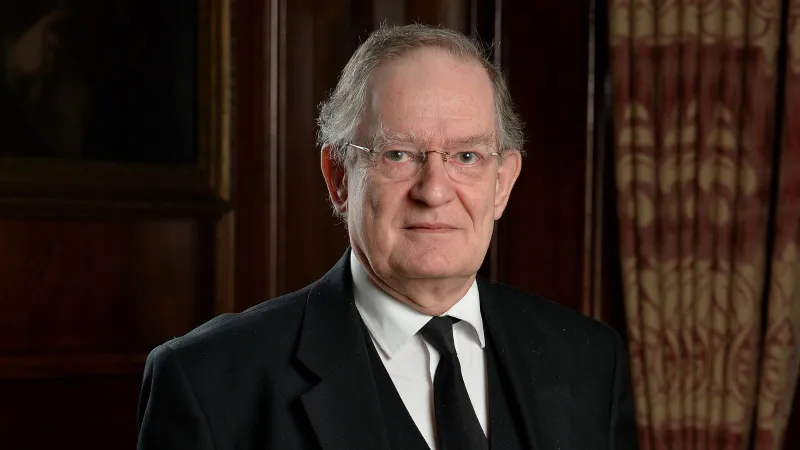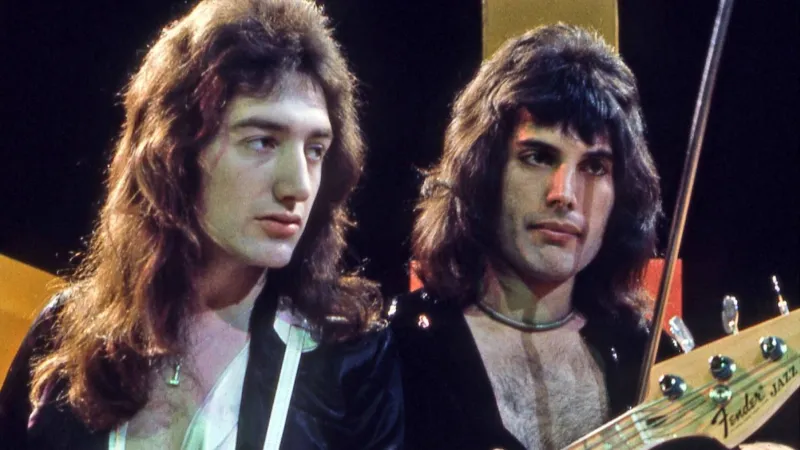Is there a connection between the Academy of Ancient Music, Dancing Masters, the Football Association, the anti-slavery movement, church missionary societies, the Lawn Tennis Association and the development of Greece and many other countries as popular cultural tourist attractions?
Perhaps surprisingly, the link is Freemason’s Hall (FMH) - because for most of the nineteenth century many of the organisations and societies which were set up to make change happen across the world used the Hall and Tavern for their meetings. Why? Because it was there; the largest secular meeting hall in central London, and open to all who were prepared to pay the hiring fee. And UGLE needed the money.
During the twentieth century, it was different. Freemasonry became more inward-looking and FMH could not be hired. But from 1985, after the Grand Master had instituted a more open policy on relations with the public and press, the Hall re-opened to non-freemasons. Today we take it as usual that we share the premises with others, and so too we see freemasonry finding again its full place within normal social discourse.
A little exploration into which organisations had used the premises in earlier years has revealed how diverse these organisations were.
FMH, as we know it now only just touches, at its most eastern (Museum) end, the sites on which from 1775 the earlier Grand Lodge Halls were built. The first hall was big enough for about 800 people and was built in 1775 by Thomas Sandby RA, a distinguished architect and freemason, in the garden of No 61 Great Queen Street. The frontage became the Freemason’s Tavern and Coffee House.
Sandby’s Hall was too small but was only finally demolished when the present FMH was built, this was because it became unstable when the buildings around it were taken down. The famous Sir John Soane built a second hall next to it but it was unsuccessful. It was replaced in Victorian times by the hall that today survives as the Grand Banqueting Hall of the Connaught Rooms.
However, newspapers exist to advertise what is going to happen and to report on what has happened. Thousands of these newspaper cuttings are now accessible online and it is these which still survive. As the {pics-see Examples} show, the range of organisations that used FMH in the early nineteenth century is very large.
Sometimes there are other sources of information. That great journalist Charles Dickens in1835 wrote a newspaper report (later published in Chapter 19 of Sketches by Boz) about the kind of experience a mid-nineteenth century gentleman might expect at a charity dinner:
‘Let’s suppose you are induced to attend a dinner of this description-‘Indigent Friends ‘Benevolent Institution’……you deposit yourself in a hackney coach, the driver of which –no doubt that you may do the thing in style-turns a deaf ear to you earnest entreaties to be set down at the corner of Great Queen Street, and persists in carrying you to the very door of the Freemasons’, round which a crowd of people are assembled to witness the entrance of the indigent orphans’ friends. You hear great speculations as you pay the fare of your being the noble lord who is to fill the chair…..’
Dickens describes the bustle, the semi-organised chaos for the cloakroom, finding his place at one of three long tables (‘with knives and forks which look as if they have done duty at every public dinner in London since the accession of George the First’) the company, the dinner, the interminable speeches, and the entry of stewards with a plate in their hands into which sovereigns and special donations are deposited. And so on.
We don’t know how many times Dickens went to meetings at FMH, but if he was like many others in the nineteenth century it was probably many times; the famous, prime ministers, lords, archbishops and bishops, and the many thousands whose names we don’t know, came to events and meetings of all kinds at FMH. Things change of course. On 10 April 1863 for example, the Waterford News records that Charles Dickens himself was the main speaker at the Anniversary meeting of the Royal General Theatrical Fund Society, to be held at FMH.
All through this time, and while construction and sometimes reclamation work went on (fires were common, with a big one in 1883) masons regularly came and went to their meetings.
In the later eighteenth century and for some years afterwards, events run by Dancing Masters were very popular. Initially, FMH resisted these because they tended to be rowdy and lead to damage, but the money was too tempting. Their conditions included:
- ‘No concert or ball for a less sum than ten guineas a night’.
- ‘whoever shall take the Hall shall at the time of the agreement give satisfactory security to the Committee to repair any injury that may be sustained, during the time the Hall is let to them’.
Masonic lodges had always met in the back rooms (if available) of inns and taverns and originally eating and drinking took place at the same time. Having the Freemasons’ Tavern on the Great Queen Street frontage and the hall behind, conveniently entered via the tavern side entrance, was an ideal solution for both Masonic and non-masonic visitors. It was important though that first impressions of the premises and, later, the food, met the visitor’s needs. The UGLE Hall Committee controlled hall bookings, and contracted out its daily running to the landlord of the tavern; sometimes this all worked well but inevitably there were good and bad times and on occasion the Hall Committee had to step in.
One regular organisation was the Academy of Ancient Music which from 1784 used FMH for a series of public concerts. In response to a request from them Grand Lodge installed an organ in the Hall (at the cost of 200 guineas); we do not know, but could this have been a key occurrence which led to our masonic tradition of an organ available for use at Lodge meetings?
The second part of this article will say more about the organisations which used FMH all these years ago.
PART 2
The first part of this article set out how it happened that from about 1775 to 1914 Freemasons’ Hall and Tavern (FMH) was available for non-masonic hires, and, especially in the early nineteenth century, had a good non-masonic business-maybe three or more times a week, providing for many of the organisations who drove social changes at the time.
This article looks in a little more detail at what these organisations were.
Most of our information comes from newspaper cuttings, but occasionally there other references turn up; the two most prominent are the two plaques on the wall of the buildings about 20 yards west of the entrance to the Connaught Rooms noting that the Geological Society and later, the Football Association were set up in the Freemasons’ Tavern on that site. { pic of the plaques}.
There are around 2,000 references to notices, events etc at the ‘Freemasons’ Hall and Tavern’ in the Times On Line Archive, and a rather indigestible further 270,000 records from other British newspapers. Many entries of these latter, of course, are duplicates, and sampling was used to try and identify trends and what looked most interesting.
In the eighteenth century most seem to have been for musical events, theatrical shows, charity events and talks. The meetings also include some by organisations, such as the Wheelwrights, Coachmakers and Harness Makers, which seem to be from a pre-fully industrialised society, and there are some regular long-time hirers like the Academy of Ancient Music; and the Smithfield Cattle Club Show Dinner was held in the tavern from 1807 for about 100 years.
After about 1810 there are roughly fifty years of major political, social and ecclesiastical meetings. But by the 1860s society had changed. The railways (and the hotels springing up next to them) were also changing the way contacts were made and developed. By 1900 what is left is mostly masonic use, regular charity and some musical events, and literary dinners. After the Second World War, freemasonry had become more private and it wasn’t until the 1990s that freemasons again became used to meeting non-masons in the building.
The French Revolution in the 1790s led to a period of major political debate and FMH hosted many meetings and dinners. For example, one group of Whig politicians calling themselves ‘Friends of the People’ and seeking parliamentary reform, understandably preferred not to meet at Westminster. Fifty years later the famous Anti-Corn Law League met for a number of years until in1846 they achieved the repeal of the Corn Laws which did away with the old protectionist agricultural arrangements and opened Britain up to free trade across the world. The Central Agricultural Association, the group opposed to this change, also met regularly in FMH during the 1840s; presumably not on the same days as the Anti-Corn Law Leaguers.
FMH was frequently used for anti-slavery meetings. The Morning Post of17th April 1807, just days after the Act abolishing the carrying of new slave labour on British ships was passed, tells us of a meeting that was called by a very numerous and highly respectable {group of} noblemen and gentlemen for the purpose of concerting the opportunity presented by {the Act} for promoting innocent commerce and civilisation in Africa’.
FMH was the venue for packed abolitionist meetings in March and June 1814, and in June 1821 when the problem of continuing slavery in Asia and Africa was debated. In May 1830, 2,000 people packed FMH when the Anti-Slavery Society met and demanded the complete abolition of slavery. This led to the Abolition of Slavery Act, of 1833. Over the next fifteen years there are records of numbers of bookings and meetings, including the great World Anti-Slavery Convention of 12-23rd June 1840, which planned the way forward for the future.
No doubt prompted to some large extent by concerns about their fellow man, whether slave or living in what then were remote parts of the world, various societies of a missionary nature were formed in the early nineteenth century. Many of them still exist and it may have been partly because they tended to attract membership from the non-conformist churches that FMH first became a favoured venue for their meetings. They include the Church Missionary Society (founded in 1977) and the British and Foreign Bible Society (founded in 1804 to produce bibles in Welsh.)
During this period of rapid industrialisation and scientific development, FMH was often the ‘neutral’ venue for meetings where the various long-lived religious divisions among the Christian churches in Britain, dating back to the Reformation (Catholic, Church of England, Methodist, Free etc) were re-examined, and communications between them, if not agreement, started. One very pragmatic example of this is comes from the 1830s when the General Cemetery Society shareholders used to meet at FMH. The growing population of London forced previously independent and opposing groups, government, the churches, and private individuals etc to sink their differences and create new burial arrangements for Londoners as a whole. FMH provided space for interested parties to consider how previously intractable issues could be resolved pragmatically.
But before death is life, and there were plenty of other individuals and organisations who in the nineteenth century used FMH on a regular or occasional basis. Newspaper cuttings show they included school Old Boys’ dinners, Burns Night suppers, grand balls to collect funds to relieve distress eg in Ireland or abroad, dinners for some of the ‘exiles’ societies, eg the Yorkshire Society, the Society of Ancient Britons (Welsh), Hibernian Society (Irish), the British Swimming Association annual awards etc etc.


